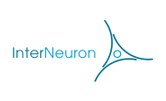Bernstein-CorTec Award 2020 | Special Bernstein Seminar with Júlia Gallinaro and Katharina Heining
| When |
Feb 16, 2021
from 05:00 PM to 06:00 PM |
|---|---|
| Where | Zoom Meeting. Meeting ID and password will be sent with e-mail invitation. You can also ask Fiona Siegfried for Meeting ID and password. |
| Contact Name | Fiona Siegfried |
| Contact Phone | 0761 203 9549 |
| Add event to calendar |
|
In this video, both awardees introduce themselves
Video
Read also the CorTec Newsletter Invite 02.2021
Introduction by Jörn Rickert, CEO and Founder CorTec GmbH
Dr. Júlia Gallinaro
Neuronal assembly formation and non-random recurrent connectivity induced by homeostatic structural plasticity
Brain networks are plastic, and plasticity is usually classified into two distinct categories: Hebbian or homeostatic. Hebbian is driven by correlation in the activity of neurons and is considered to be the basis of learning and memory, while homeostatic relies on a negative feedback signal to control neuronal activity. The exact way multiple types of plasticity interact in the brain, however, remains to be elucidated. In our work, simulations of spiking neural networks and mathematical tools were employed to show that there is more to homeostatic plasticity than just controlling network stability.
More specifically, we showed that homeostatic plasticity has a Hebbian effect on the network level, leading to formation of cell assemblies upon stimulation. Using a model of classical conditioning task, we demonstrated that this rule can perform pattern completion, and that network response upon stimulation is gradual, reflecting the strength of the memory.
Furthermore, we showed that networks grown with homeostatic structural plasticity and a broad distribution of target rates exhibit non-random features similar to some of those found in cortical networks. It remains an open question, however, the extent to which homeostatic plasticity can be accounted for structural features found in the brain.
The awarded PhD study was performed in the lab of Prof. Stefan Rotter at the BCF (https://www.bcf.uni-freiburg.de/about/people/Rotter). Current affiliation: Bioengineering Dept., Imperial College, London, UK (http://www.bg.ic.ac.uk/research/c.clopath/)
Dr. Katharina Heining
Beyond spikes and seizures: Detection and dynamics of epileptiform activity patterns
In epilepsy, patients suffer from hypersynchronized brain activity. Such epileptiform activity (EA) can present itself in diverse patterns. Research thus far focused on the two most extreme versions, epileptiform spikes and seizures. Our goal was to better describe and understand the wide range of EA patterns in the intrahippocampal kainate mouse model of mesial temporal lobe epilepsy.
We analyzed local field potentials recorded in vivo from the sclerotic hippocampus of chronically epileptic mice and developed a tool to automatically detect and classify EA patterns within a unified, data-based framework. The feature distributions of EA patterns suggested a continuum of EA in terms of spike load. We partitioned this continuum into bursts of high, medium, and low spike load. The temporal sequence of these burst patterns revealed macro-patterns: high-load clusters, transition phases, and background phases. In these phases, low-load bursts played a dual role. On the one hand, their rate was increased in transition phases surrounding high-load clusters.
On the other hand, high rates of low-load bursts in background phases indicated reduced susceptibility to high-load bursts. This shows that low-load bursts could serve as a context-dependent marker for the susceptibility to high-load bursts and leads to the question, whether and how low-load bursts actively shape susceptibility dynamics.
The awarded PhD study was performed in the lab of Prof. Ulrich Egert (https://www.imtek.de/professuren/biomikrotechnik/biomikrotechnik)
Current affiliation: Dept. of Neuroscience, Karolinska Institutet, Stockholm, Sweden (https://carlenlab.org/).





